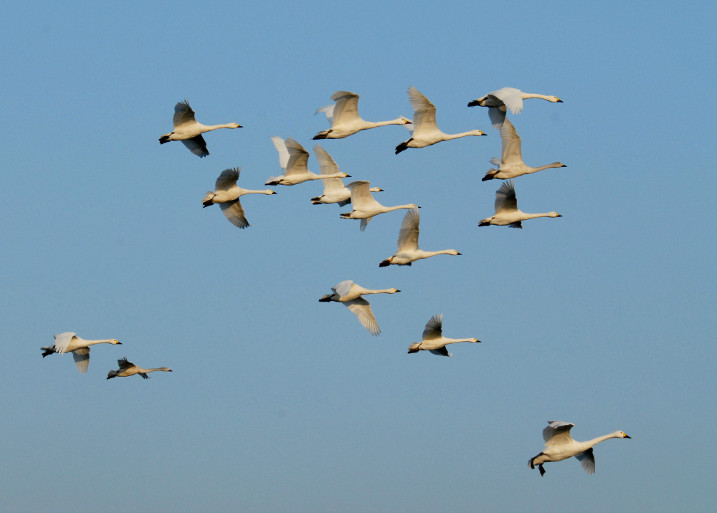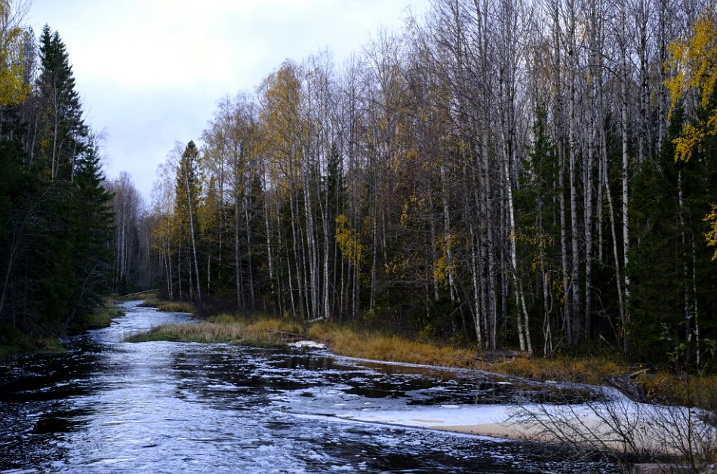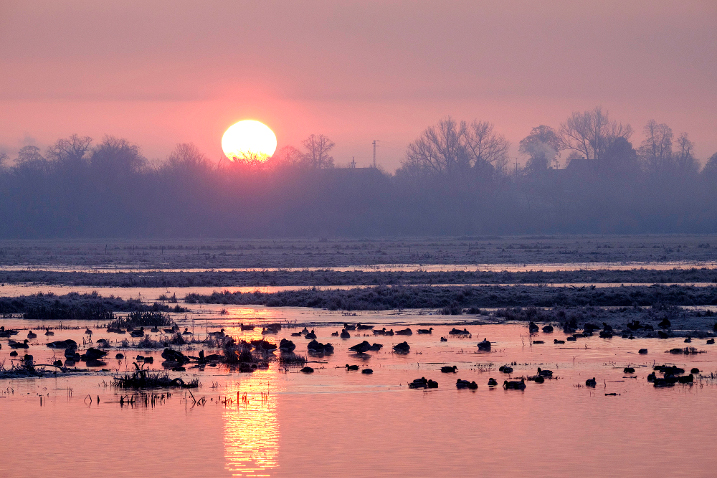One swan's incredible journey

An incredible 3,600 kilometres in just seven weeks… From the wilderness of the arctic tundra to WWT Welney. That’s some pretty impressive flying by Daisy Clarke, so how did she do it?
Thanks to the amazing GPS tag fitted around her neck, we are now able to see exactly where she’s been and what she’s been up to, throughout her entire journey.
ONE FINAL FEAST
Daisy Clarke spends her summer months in and around the Naryan Mar Delta in the most northerly part of arctic Russia.
But just before she sets off on her epic migration, Daisy Clarke, along with thousands of other Bewick’s congregate as they do each year, for one final pre-migratory feast. She spends these final days loafing around, conserving energy and building up her fat reserves on aquatic vegetables.
After a short warm up flight down the Naryan Mar Delta, Daisy Clarke sets off across the Russian tundra, embarking on one of nature’s most extreme migrations.

TRIGGERS FOR MIGRATION
But what triggers her departure? Timing her migration is crucial for Daisy Clarke’s survival and she relies on a number of inbuilt and environmental cues. The onset of sub-zero temperatures is an important trigger, although day length and wind direction also play a part.
CROSSING THE TUNDRA
But once she sets off, there’s no stopping her. In just 24 hours, Daisy Clarke flies a massive 620 kilometres, crossing the vast expanse of the arctic tundra in one non-stop flight. Only a day later, our satellite data finds Daisy Clarke on the edge of the White Sea on a wetland near Archangelsk.
The wetlands surrounding the White Sea are some of the most important resting and feeding sites for migrating birds – not just Bewick’s. Their waters, rich in aquatic plants, are a welcome sight for any tired, hungry swan, especially after the long-distance flight they’ve just undertaken.
ONWARDS ACROSS THE TAIGA
But just two days later we see Daisy Clarke setting off again. This time the challenge of the Taiga forest lies ahead.
This is the biggest forest on the planet and its band of coniferous trees stretches round the top of the world from western Alaska to eastern Siberia.
And it’s here, in the middle of this dense forest, miles from any human habitation, that we find Daisy Clarke happily ensconced on a small, secluded lake, where she stays for 3 weeks.
WINTER’S ICY FINGERS
But after a good rest it’s time for Daisy Clarke to spread her wings and get airborne again. The icy cold of winter is creeping across the forest and when it arrives it will be long and hard. Temperatures can drop to minus 50 and winds howl around the trees. It’s no place for a swan to dally.

A WELL-EARNED REST
So westwards it is for our swan. And 22 days after she first departed the tundra, Daisy Clarke crosses from Russia into Estonia to land by some lakes, flying 850 kms in just 18 hours. But there’s only time for a quick food stop, before pushing on to the wetlands of the Nemunas Delta in Lithuania, her chosen spot for her second extended stopover of three weeks.
It’s very common for Bewick’s to stop for several weeks at least once or twice during their migration in order to build themselves up for the next stage of their journey.
CHANGING LANDSCAPES
However, Daisy’s internal clock is telling her to push on. Snow is on the ground, temperatures are regularly below freezing, so she flies on to Poland and into Germany.
And now we can see from the satellite imagery that the landscape Daisy Clarke is flying over is changing. Gone are the vast vistas of the tundra, the forests of the taiga. Fields are cultivated and we can see that Daisy Clarke’s behaviour during her stops is changing. During the day she flies out to feed in the fields, by night she returns to the safety of her chosen lake or pond to roost.
A NIGHT CROSSING
Daisy Clarke then flies onward to Holland and by the evening we can see her on the edge of the North Sea, preparing for a night crossing. By midnight she makes it to UK soil, arriving just in time for breakfast at WWT Welney.
And the best news of all, for the first time, she has arrived with a partner.
WHY WETLANDS?

Daisy Clarke has visited many countries along her migration and benefitted from the safety and rich food provided by the mosaic of wetlands she has found along the way. Each one, however small or large, has been vital for her survival and if just one of her chosen resting sites had been polluted, drained, destroyed or disturbed by humans, it could have made the difference between life and death. And yet, that is exactly what is happening. In the last 100 years, the world has lost half its wetlands.
PROTECTING THESE PRECIOUS PLACES
Ensuring this network of wetlands is protected for the benefit not just of endangered Bewick’s like Daisy Clarke, but for all migratory birds and the other wildlife that call them home, is at the heart of what we do.